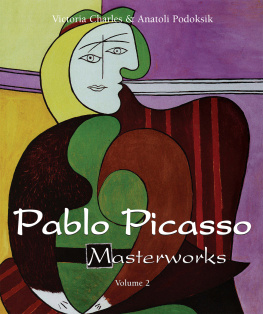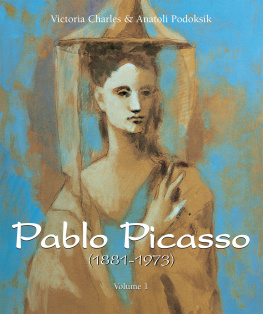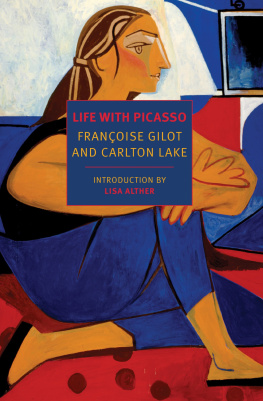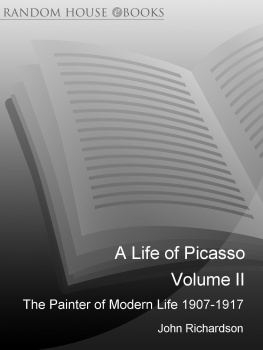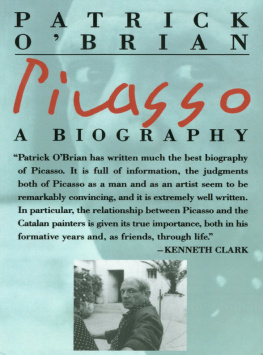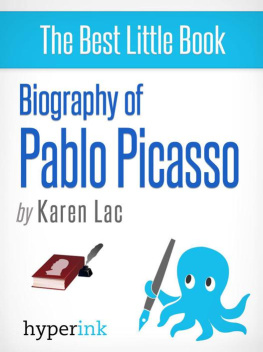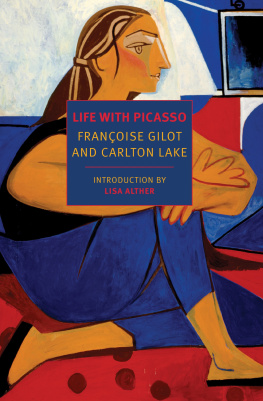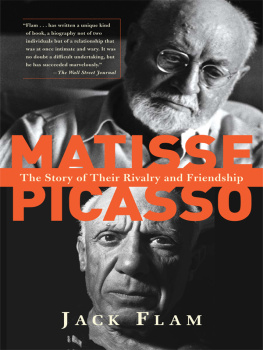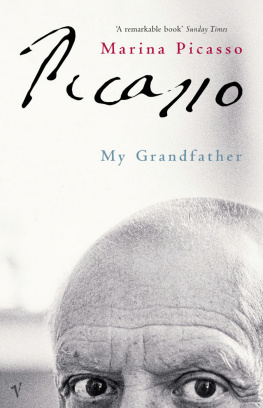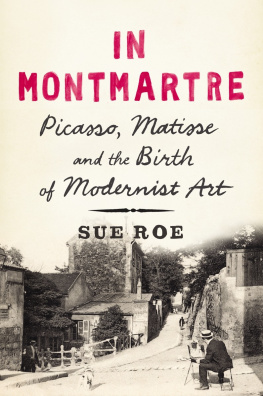MALTE HERWIG
Translation by JANE BILLINGHURST
THE WOMAN
WHO SAYS NO
FRANOISE GILOT
ON HER LIFE WITH AND
WITHOUT PICASSO
REBEL MUSE ARTIST
Copyright 2015 by Ankerherz Verlag GmbH, Hollenstedt
Originally published in Germany in 2015 as Die Frau, die Nein sagt by Ankerherz Verlag GmbH
German text copyright 2015 by Malte Herwig
English translation copyright 2016 by Jane Billinghurst
All rights reserved. No part of this book may be reproduced, stored in a retrieval system or transmitted, in any form or by any means, without the prior written consent of the publisher or a license from The Canadian Copyright Licensing Agency (Access Copyright). For a copyright license, visit www.accesscopyright.ca or call toll free to 1-800-893-5777.
Greystone Books Ltd.
www.greystonebooks.com
Cataloguing data available from Library and Archives Canada
ISBN 978-1-77164-227-9 (cloth)
ISBN 978-1-77164-228-6 (epub)
Copyediting by Shirarose Wilensky
Jacket and text design by Peter Cocking
Jacket photograph courtesy Franoise Gilot, private archive
Photographs by Ana Lessing, except photos: show motifs from Franoise Gilots Venetian travel sketches.
Reproduction of passages from Franoise Gilots memoir, Life with Picasso, with kind permission of McGraw-Hill, New York, USA .
Every attempt has been made to trace ownership of copyrighted material. Information that will allow the publisher to rectify any credit or reference is welcome.
We gratefully acknowledge the financial support of the Canada Council for the Arts, the British Columbia Arts Council, the Province of British Columbia through the Book Publishing Tax Credit, and the Government of Canada through the Canada Book Fund for our publishing activities.
No matter how old you are, you must behave like the ocean. Watch the movement of the waves, the coming and going of the tides. All life has movement, rhythm, a momentum you must seize like a dancer, and if you allow this movement to flow through you, then you become one with the rhythm of life.
FRANOISE GILOT
[ 1 ] VALLAURIS, SEPTEMBER 23, 1953
THE WOMAN WHO SAYS NO
PICASSO RAGED. Laden with suitcases, two children, and a young woman, the taxi sped off from the Villa La Galloise in Vallauris. Soon the car was nothing more than a cloud of dust stretching along the southern French country road in the direction of Paris. Picasso strode angrily back into the empty house. She had actually done it. She had kept her word, and she was gone for good with both the childrenhis children! This was outrageous, completely unforeseen, and completely unforeseeable in the old masters life plan.
The woman in the car did not look back, but she could readily imagine the state Picasso was in. For ten years they had been a coupleyoung Franoise and old Pablo. She knew him better than almost anyone else. She knew both his tender and his terrible sides. But she also knew that she and her children would be lost if they stayed with him any longer. Franoise looked at Claude and Paloma, who were sitting next to her. She still loved Pablo, but she loved the children more.
No woman leaves a man like me, Pablo had explained to her just a few weeks earlier, all the while fixing her with his darkly luminous basilisk gaze. He was rich and famous, the best-known painter in the world, a king in the world of arta god, even. In five hundred years, people would still be admiring his work and there would be books written about him. She, however, would be a mere footnote in the shadow of his genius. He considered himself to be irreplaceable and irresistible. If he was also sometimes insufferable, those who surrounded him graciously accepted this as the price they paid for the favor of his presence.
And what about her? She burst out laughing and countered that in that case she would be the first woman who ever succeeded in leaving him. He had always loved her bright, uninhibited laugh, but this time, it got on his nerves. This time, it struck fear into his heart. Leave him? What was there to laugh about in that? He was deadly serious. So, apparently, was she.
FROM NOW ON, she told him, she wanted to engage with people of her own generation and the issues they were grappling withanother statement that made him bristle with anger. Certainly, there was a forty-year age gap between them, but what did that matter? Surely the present always belonged to him, the eternal child? His creative works kept him younger and stronger than any of her contemporaries. And she had the gall to bring his age into the conversation? This was pure blasphemy.
He implored her, he berated her, he appealed to her sense of duty (she had to stay with him because of the children), and then he threatened her: You imagine people will be interested in you? They wont ever, really, just for yourself. Even if you think people like you, it will only be a kind of curiosity they will have about a person whose life has touched mine so intimately. And youll be left with only the taste of ashes in your mouth. For you reality is finished; it ends right here. If you attempt to take a step outside my realitywhich has become yours, inasmuch as I found you when you were young and unformed and I burned everything around youyoure headed straight for the desert.
It was meant as a warning but also as a curse: Without me you are nothing. I am the sun, the light, life itself. Without me you will dry up, little flower, you will disappear into the void. I painted you before you were even born! I loved you because you needed my love, and you do not deserve to be loved if not by me.
But this time nothing worked. She said she would rather live in the desert than in his shadow. She wanted to find her I again was how she put it. As though there was anything so horribly sentimental as happiness in this world. What modern nonsense women like her believed! Where were Roman mothers todayan expression he loved to usewomen who happily sacrificed themselves for their husbands and children?
Franoise smiled. Even a genius can believe such nave nonsense. But she knew that Picassos rant wasnt so much to make her change her mind as it was to cover up his own anger about being left alone. The young woman caught herself almost feeling sorry for the tyrannical genius whom she had, indeed, left forever. She imagined the great Picasso sitting stunned and alone. She imagined him looking around the house where they had lived for the past five years, the house that he had filled with ceramics in bouts of restless productivity, a house that would now appear empty without her.
He looked around at the paintbrushes, bottles, and objects piled up on the floor and on shelves, and suddenly he was overcome by a feeling he had never experienced before. The unholy chaos that usually energized him in his work now only served to irritate him. Where was the calming counterweight to his crazy life? The admiring, adoring audience for his immense ego?
Shit!
Thoroughly miserable, Picasso sat down at the kitchen table and lit a cigarette. He should write to Sabarts, his trusty secretary in Paris, and ask him to check up on her. Perhaps she had a lover. Affairs had never meant much to him. There were times, of course, when he had to coax things along. There were women who dolled themselves up and pretended they wanted only to be painted by him. That in itself was enough to immortalize them in their own lifetimes. The rest was, as far as he was concerned, a question of gratitude, a mere formality, a postscript for his pleasure. They had never meant anything to him, and if they had, then only for a short time, after which he knew how to divest himself of them.
Next page

